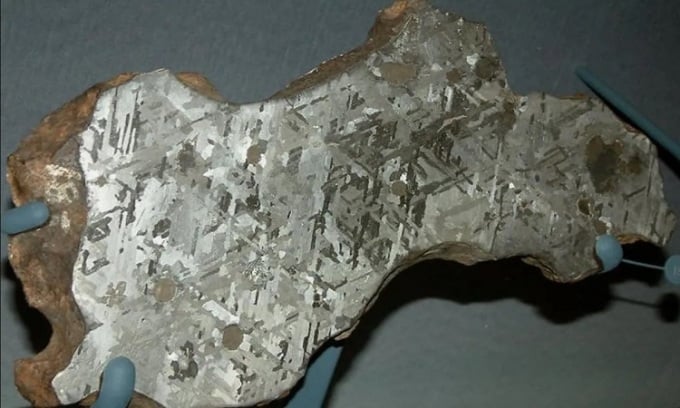The Diablo Canyon meteorite in Arizona contains diamonds with an unusual structure, formed from a collision tens of thousands of years ago.

Meteorite specimen in Diablo Canyon. Photo: Wikimedia
Scientists used advanced imaging techniques to examine diamonds from the Diablo Canyon meteorite, and they discovered that they were no ordinary gemstones, according to IFL Science . The Diablo Canyon meteorite fell about 50,000 years ago, creating the Diablo Canyon crater, one of the most intact impact craters in the world . In a study published in 2022, scientists said that the new stones were not only as hard as regular diamonds, but also unusually flexible. What's more, they have tunable properties, which could potentially be used in electronics.
Diamonds used in jewelry are made of carbon atoms arranged in a cubic pattern, each atom bonded to four others, sometimes interrupted by other elements, which contribute to the color. Lonsdaleite is a rare form of carbon first discovered in 1967 in the Diablo Canyon meteorite. Previously, researchers thought it was made of carbon atoms arranged in a hexagonal lattice, so they classified it as an allotrope of carbon along with graphite, amorphous carbon graphene, and graphyne.
However, when examining lonsdaleite using Raman spectroscopy and crystallography, Dr. Péter Németh of the Hungarian Institute of Geology and Geochemistry discovered that lonsdaleite is actually composed of alternating cubic diamonds and graphene, which he calls diaphite. When the diamonds and graphene meet, the layers separate unexpectedly. The amount of lonsdaleite available is too small to test some of its properties. However, the model suggests that it could be used to design superhard yet ductile materials, promising applications ranging from abrasives, electronics, nanomedicine to laser technology.
An Khang (According to IFL Science )
Source link



































































































Comment (0)